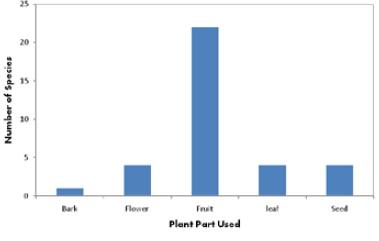FOOD AND PASTURE PLANT DIVERSITY FROM PARI DISTRICT OF KAURU LOCAL GOVERNMENT AREA OF KADUNA STATE, NIGERIA
Keywords:
Ethno-botanical Survey, Fodder plants, common names, Chawai peopleAbstract
An ethno-botanical survey was carried out in October, 2017 on the food and fodder plants of the Chawai people of Pari, Kauru Local Government Area of Kaduna State. A 10m x 10m quadrat size was used to sample 8plots, 200metres apart. Oral interviews were conducted with Elders, Alternative Medicine Practitioners, Hunters and women. 49 plants species were recorded as plant species used for food/culinary and fodder/veterinary purposes, by the inhabitants. The results of the study revealed that 31 (62.27%) of the 49 plants are used as food, condiment and/or spice. Out of the 31plant species collected, fruits are consumed more as food than any other part of the plant (74.19%).The Family Mimosoideae accounted for 6(12.12%) out of the 49 used for food and fodder purposes. Anacardiaceae, Sapotaceae, Euphobiaceae, Moraceae, and Apocynaceae had 3 species each. The remaining families had 1 and 2 species each.The study revealed that the plant part mostly used are the fruit 24 (42.11%)this was followed by the leaves14 (24.56%), seed and bark with 5each (8.5%), flower 4 (7.02%), roots 3 (5.26%) and stem 1 (1.8%). There is the urgent need for more documentation of the traditional ethno-botanical knowledge.
Downloads





